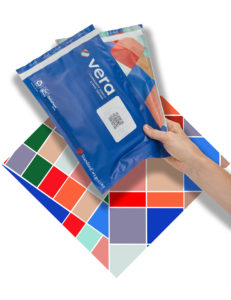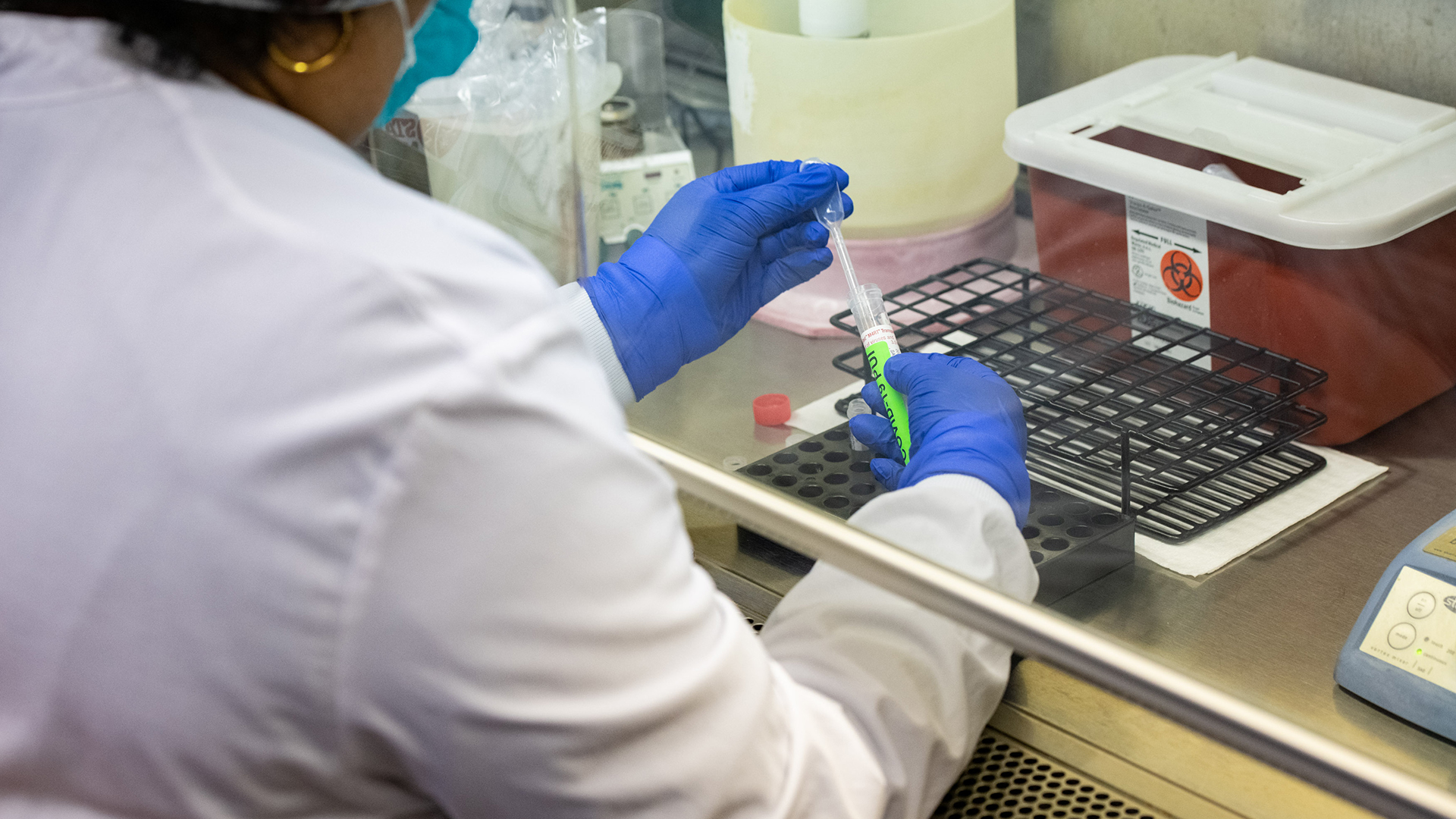A population-level disease monitoring system that employs at-home self-swab kits is being expanded today, at no cost to participants, as part of an infection prevalence study in the San Francisco Bay Area. The system could have broader impact on testing not only for COVID-19, but for other diseases as well.
The service uses the Vera Cloud Testing Platform which continuously aggregates test results and data about symptoms submitted by volunteers to study COVID-19 prevalence in real-time across the region. The system is the result of collaboration by Stanford University with the Chan Zuckerberg Biohub, Gates Ventures, the University of Washington, Microsoft Research and other private and public institutions. The Bill & Melinda Gates Foundation has provided advisory support.
Vera is a scalable and low-cost “testing-as-a-service” platform that could also be used by public health departments and employers. With its sample self-collection kit and population health monitoring system, it can also be used on a broader scale to help with back-to-school COVID-19 testing for students and staff at schools and universities, an option not readily available today.

“We’re hoping that this can address inequities in testing by reaching underserved populations who are often at the highest risk,” says Stephen Quake, co-president of the Chan-Zukerberg Biohub.
Its impact could extend to other types of testing in the future, such as for other viruses, new strains of flu, or to help monitor diseases, says Stephen Quake, Ph.D., the Lee Otterson Professor of Bioengineering and Professor of Applied Physics at Stanford University, and co-president of the Chan-Zuckerberg Biohub.
“What we’ve learned through this pandemic is that there’s a real mismatch between testing capacity and testing need. Certain parts of the country have more than enough testing capacity, and others do not,” Quake says.
Vera helps address that problem by providing a way for people to collect their own sample at home then mail them for testing to labs that can be based anywhere, he says.
To initially test the platform, Stanford Medicine has been conducting a pilot study known as CATCH – Community Alliance to Test Coronavirus at Home – for the past few weeks, and now is officially launching the full study to monitor the spread of COVID-19 in all 12 counties of the greater Bay Area, with the hope of securing up to 100,000 participants during the course of the flu season.
“We’re hoping that this can help address inequities in testing by reaching underserved populations who are often at the highest risk – people who work in essential occupations and may have difficulty accessing health care facility-based testing,” says Quake. Testing is free to those participating in the CATCH study.
Yvonne Maldonado, M.D., a professor of pediatric infectious diseases and of health research and policy at the Stanford School of Medicine, also a leader of the CATCH study and an advisor to the Vera team, says the platform’s compatibility with any type of COVID-19 test means it has the potential to be adopted by a range of organizations, well beyond the initial CATCH study.

Yvonne Maldonado, M.D., Stanford School of Medicine professor of pediatric infectious diseases and of health research and policy, is one of the leaders of the CATCH study.
“While the CATCH study uses the Stanford laboratory’s RT-PCT assay, you could use an Abbott test, or any other lab or test you want. The software platform allows you to link test results and monitor how infections are spreading through the overall population,” she says.
All Vera participant information and test results are securely protected, Maldonado says, although COVID-19 results are reported to public health departments as required by law. Vera – derived from the Latin word for “truth” – includes a customizable enrollment and testing system, a self-swabbing kit, and a secure participant portal for obtaining results and any other medical follow-up that may be needed.
Microsoft technology, including the Microsoft Healthcare Bot, Azure, Power BI, and Power Platform, was used to help create Vera and CATCH, which adhere to Microsoft’s policies on data and privacy, including during the COVID-19 pandemic. Microsoft’s commercial software engineering team helped scale SCAN’s epidemiology testing platform that Vera is based on. The Healthcare Bot is used by the Centers for Disease Control, as well as thousands of hospitals around the world, to help screen people for potential COVID-19 infection and treatment. Microsoft’s AI for Good program has been supporting the project team as they have scaled up their efforts.
“What’s exciting about Vera is the ability to track this pandemic in real-time to the degree possible, and give people who might not otherwise be reached access to testing,” Maldonado says. This real-time system also enables health care providers and public health agencies to implement more complex testing algorithms, including increasing testing rates as symptoms are reported, as well as programmatic epidemiological sampling plans, tailored to local exposures, demographics and other characteristics over time.
The researchers say the inspiration for Vera was work done earlier this year by the greater Seattle Coronavirus Assessment Network (SCAN), a program that receives funding from Gates Ventures and technical assistance from the Bill & Melinda Gates Foundation and public health authorities.

Vera and CATCH offer “the ability to better understand the disease spread in a given community, which is really very valuable,” says Vikram Dendi, general manager for Microsoft Health NExT. Photo credit: Stanford University.
SCAN uses an at-home kit that allows participants to collect their own sample with a simple swab within the front of each nostril — a far more gentle and less-invasive process than other COVID-19 tests which require a nasal swab to be placed all the way to the back of the throat. The CATCH study uses a similar self-swab method as SCAN.
SCAN grew out of the Seattle Flu Study, which in February detected one of the first documented U.S. cases of community transmission of COVID-19.
From SCAN, CATCH shares “the broader population-level epidemiological understanding of the disease,” says Vikram Dendi, general manager of Microsoft Health NExT. “Where is it breaking now? How is it spreading? How many people are symptomatic?
“Being able to do that by sending kits to your home is a very powerful way of ensuring that you can actually have a much better understanding of the pandemic, and also do it in a much more equitable way,” says Dendi.
COVID-19 disproportionately affects people of color as well as those in low-income neighborhoods. But it’s often these communities that have the least access to health care and the greatest barriers to testing. “The design of CATCH as a study intends to try to overcome those kinds of inequities and really develop a very clear and comprehensive picture of how things are evolving,” he says.
From a research and science perspective, Dendi says that Vera and CATCH offer “the ability to better understand the disease spread in a given community, which is really very valuable, and we were very happy to help.”
“It really has quite a bit of potential for not only now, but down the road,” he says. “The promise of return to school, and to have that happen not just for one school, but beyond, is certainly something that we will celebrate as and when that happens.”
Top image: The Stanford Clinical Virology Laboratory will provide testing for a pilot use of Vera with the CATCH study. Photo credit: Steve Fisch.

